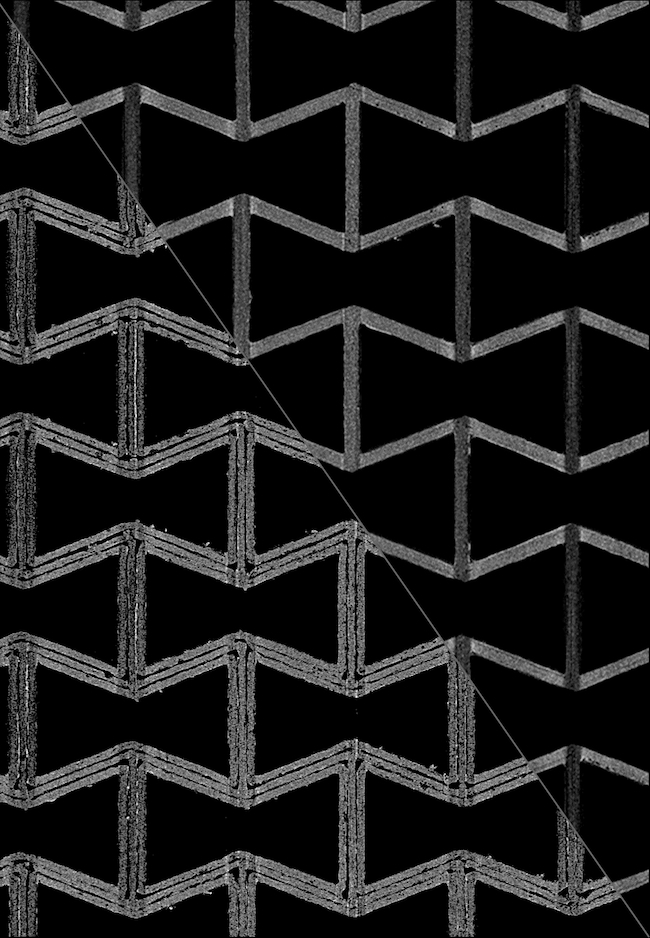New research on 3D-printed materials could unlock benefits for industry
Published: 29 July 2024
A new analysis of the deformation mechanisms which cause 3D-printed materials to fail under strain could help create future generations of stronger, lighter plastics, unlocking transformative benefits for industry.
A new analysis of the deformation mechanisms which cause 3D-printed materials to fail under strain could help create future generations of stronger, lighter plastics, unlocking transformative benefits for industry.
Engineers in the UK and Italy are behind the research, which provides unprecedented insight into the delicate balance of structural factors at play in the design and construction of lattice materials – honeycomb-like cellular structures which combine light weight with impressive strength and energy absorption abilities.
The team developed a design parameter called the ‘enhancement factor’, which provides a reliable way to predict how new lattice designs can be fine-tuned to minimise structural defects and maximise performance.
New guidelines for 3D printing based on the team’s findings, published as part of a paper in the journal Advanced Materials Technologies, could help material scientists develop robust new 3D-printed lattices with advanced properties.
In the paper, they describe how they scrutinised the 3D printing process of a material called polyetherimide, or PEI, across four different lattice designs built at three different relative densities or wall thicknesses using a common printing process called fused filament fabrication.
PEI is a sturdy thermoplastic that can be easily melted and reshaped, making it a useful, recyclable feedstock material for 3D printing.
The team subjected the materials to a series of stress tests, repeatedly flexing, pulling and compressing them until they broke. Using sophisticated micro-CT scans and thermal analysis of the materials after the tests, they found that low-density lattices, which contain more empty space than material (thin-walled honeycombs), tended to buckle and fold under pressure – an expected result.
However, the higher-density lattices often broke along the lines where individual strands of printed PEI filament met each other – a weakness known as ‘interlayer damage’ which prevented the materials from absorbing as much energy as the team expected based on the cell wall thickness of the printed lattice material.

Then, they used the data from the tests to develop computer models of the material, allowing them to run sophisticated virtual tests and explore how the materials would respond to real-world loadings without having to print new test materials each time.
The results of their modelling showed that the ability of PEI lattice material to absorb energy was limited by defects introduced when more than two layers of plastic strands were laid next to each other. The best-performing lattices had cell walls no more than twice as thick as the width of the PEI strand.
The team’s enhancement factor tool, created based on their results and validated further with real-world experiments, helps predict how much removing defects from the manufacturing process helps improve the performance of any given lattice design. In the future, designers developing new lattice materials could use enhancement factor calculations to create the best possible structures.
Professor Shanmugam Kumar of the University of Glasgow’s James Watt School of Engineering, the paper’s capping author, said: “3D printing, or additive manufacturing, gives us remarkable control over how materials can be created and allows us to build structures difficult or impossible to produce in any other way. However, the structures produced by additive manufacturing can be undermined by process-induced defects, which hold them back from achieving their full potential.
“What we set out to do with this research was to build a comprehensive picture of how those flaws are introduced and what steps we can take to account for them at every stage in the design process to produce optimum results.
“We hope that our findings, and the guidelines we’ve developed, will lead to breakthrough new developments in materials produced by additive manufacturing. Flawlessly-produced lattice materials could open up new advances in road safety, where their ability to absorb impact could help create more crash-resistant cars, or in aerospace design, where their lightness could enable more fuel-efficient aircraft.”
The research began two years ago with a collaborative effort between institutions in the UK and Italy, starting with a six-month visiting period of Italian PhD candidate Mattia Utzeri at the University of Glasgow’s Multifunctional Materials and Additive Manufacturing lab under Professor Kumar's supervision. The collaboration included contributions from academic colleagues at the University of Cambridge, UK, and the Polytechnic University of Marche, Italy, who are co-authors of the paper.
The team's paper, titled “Multiscale Experiments and Predictive Modeling for Failure Mitigation in Additive Manufacturing of Lattices,” is published in Advanced Materials Technologies. The research was supported by funding from the European Union and the University of Glasgow, fostering strong bilateral connections between the British and Italian universities.
First published: 29 July 2024
<< July

